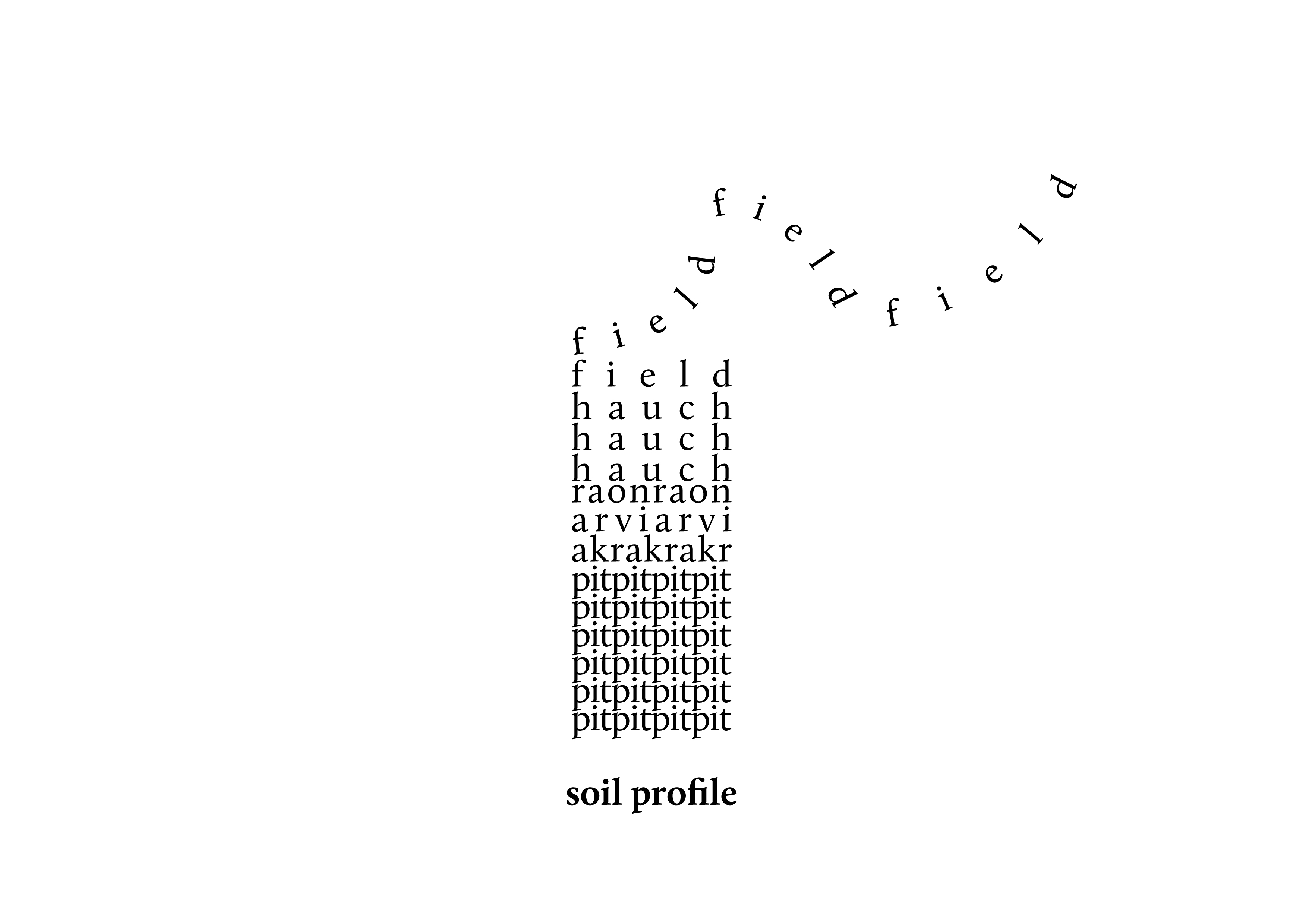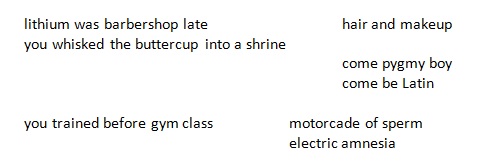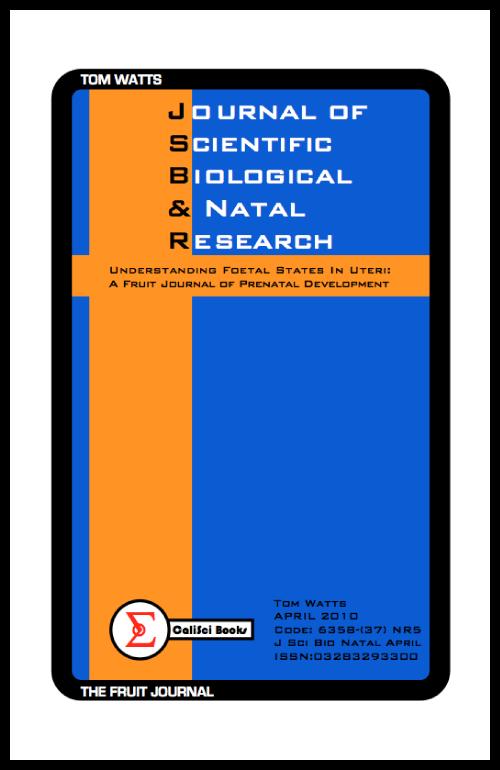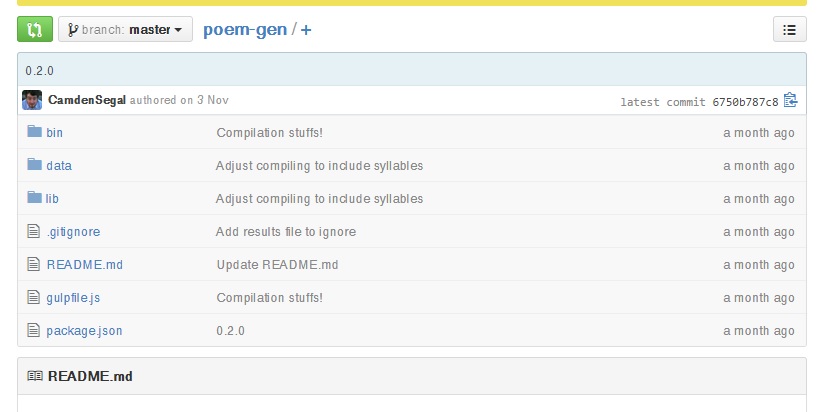FARMFORM by Harry Giles
– Reviewed by Owen Vince –
I’m going to admit up front that farmform has been sitting on my desk, and then my shelf, and then on my shelf behind a Nick Cave CD, for several months. It has been the review I put off, because – sometimes – life intervenes. And then again, sometimes, the poetry itself intervenes. I struggled to review farmform.
Because I’ve been so firmly stuck in finding a way to write about it, I’m going to “borrow” the review-style from Queen Mob’s, in bullet points or reflections, without system, because somehow that makes it more approachable.
- Ted Hughes garrottes a pigeon, or a small tawny deer. He rises from his crouch, glancing at the greying sky. He spits, probably. He wipes his hands together, dislodging the earth and blood that had become stuck there. “I’m going to write a poem about farms” he said, with quiet determination. He’s also trodden in something.
- Farmform is “a visual poetry series by Harry Giles”, created for a project which “embedded artists on Scottish farms to explore food, agriculture, science and sustainability”. Embedded is a good word; embedding, a good practice. I think of Harry Giles standing at the verges of one of those impossibly undulating carrot fields, the air ripe, the sun a blur of greasy yellow fat, all spread out.
- Each poem is presented on a postcard, contained in a pleasing cardboard box. A pink slip of paper explains the project, its funders, its point. You can shuffle and flip and hold the poems like that. It’s a nice idea. I thought about BS Johnson and his self-assembly novel; pages that could be plucked out like surgical equipment in “Operation” and reinserted again, all over the place.
- But these didn’t strike me as poems that had “come” from the process of being embedded. They felt more – arch? They felt removed from the experiential. I get the impression Heidegger would have read them, screwed up his face, and said something about embodiment. Nobody was there to hear him.
- These are visual poems. They constitute – form – shapes. To me, Formalism isn’t dead and it doesn’t require an autopsy, as some have suggested. Nor does the “new formalism”. But these seem closer to the L=A=N=G=U=A=G=E poetry that we sometimes remember, and revisit. There’s a similar feeling as contained in Grenier’s declaration “I HATE SPEECH”, of language’s own referentiality, of its pulling apart into shreds and pieces. Doing this, Grenier was a part of the motion to dismantle the assumptions underlying lyric poetry. And yet – and yet – Giles is trying to be referential here, isn’t he? The poems are communicating a message: about farming, about the politicisation of agriculture, about the vast and often bewildering infrastructures of modern farming. Perhaps it is this tension that keeps me from understanding where farmform is, properly, coming from, or going to.
- In order to succeed, the form has to be doing legwork. I felt that, overall, the poems were not being much other than merely clever. A poem titled “Quality aspects of carrots” is shaped like a carrot. It consists of words used to describe carrots (“riboflavin”, “isobutane”, “protein”). Some of these words, if we peer in gently, critically, are removed from carrots, imposed, interesting. Why “butane”? But I can’t yet get beyond the feeling that these feel removed, don’t extol and wrap themselves around in their languages and the patient potentials of these words within the context of a “poem”. Otherwise, it is a list, and little more.
- But there is something here. Something, in the language, in a lyrical jolt or flow, that arrests your attention and you say “yes, he’s on it”. I admired a poem about old growth forests because alongside a swerving list of tree-names for urban tract housing developments (“ashfield drive”, “grove place”), things utterly dislocated from forests, and yet pandering to them, we find a beautiful outstretched line which reads, “and it took all the king’s courage to command muime to destroy the caledonian forest”. It is a strident, mythopoetic line which does that sparkling thing where the form reaches out and intertwines with the content. We can’t imagine the “words” without the shape and structure that they have taken on. Together, they work.
- But this isn’t really replicated elsewhere. Other poems seem only visually clever. There’s no “handshake” between the framework (the form) and the content. There are so many options, playing in this language, to challenge and destabilise the languages of farming: its ancient name-places, its proper nouns, its mechanised machine words, the science and botany, the grant funding, of agricultural policy. They are political, for sure, and we need a politicised poetry. But they didn’t seem to really run with the material at hand. We keep having to check back to the little descriptor on the reverse of the poem/post-card in order to “get it”. I wanted that message to be better interlaced in the poem itself.
- These have a sense of humour. We are given, interestingly – in a poem which grew on me between readings – a “Strategic Plan for the Reintroduction of Agricultural Birdsong”. The poem is an admixture of scientific languages and, well, approximations of birdsong. “Ob-ob-ob-ob-JEKtiiiiiff”, “KAYpeeaye”, etc. Those of us brought up in the countryside can sympathise with the violent dispersal of this bird’s “song”. What Keats heard were not, I think, real nightingales.
- Some poems work well, with a flare and charm and eye close grained to the material and the possibilities of the language(s) that they contain. Others seem a little shallow. It’s that word “embedded” which keeps coming back to me. Are these poems interrogating the physical infrastructure and habitus of farming?
- farmform – for me, at least – falls just short of its potential, and the potentially sharp and hard edge it could use to carve open the object worlds and languages and experiences of modern farming. Ultimately, I don’t know if this is because of the format or the approach. Where – I was asking – are the farmers? Where is the actual process of agriculture? The poems seem to distract from satisfaction because there is not, ultimately, a close-grained “handshake” between language and the form in which it is suspended. The languages and ideas are hurled honestly and with quite a lot of effort at the framework and form that Giles sets up for himself; I’m afraid that only some of that effort stuck.





